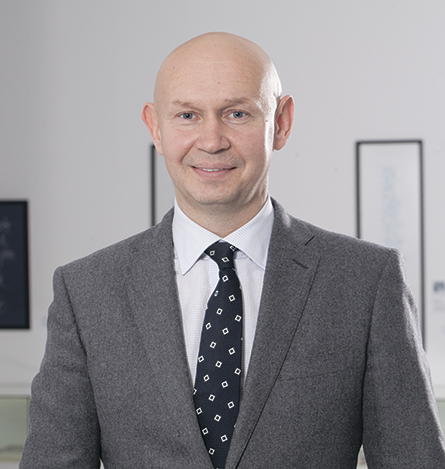The New Year address from Director of the Contemporary Museum of Calligraphy

Dear friends!
On behalf of the team of the Contemporary Museum of Calligraphy, I am excited to wish you a happy New Year!
In the anticipation of 2020, I would like to remind you about the key events of this year, the majority of which were organized by the Contemporary Museum of Calligraphy and Sokolniki Exhibition and Convention Centre as part of celebrating the 70th anniversary of establishing diplomatic ties between Russia and China.
The “Great Russian and Chinese Calligraphy” exhibition, which took place in the State Duma of the Russian Federation; planting a birch to honour the friendship between the two great countries, which involved the former Ambassador Extraordinary and Plenipotentiary of China to Russia Li Hui, and the Deputy Chairman of the State Duma Committee on Education and Science Lyubov Dukhanina; a performance of one of the leading Chinese musical bands, the ensemble of Shangdong theatre Lü (Jinan, Shangdong); the ceremonial finish of the Russian-Chinese motocross “The Road of Friendship;” an exhibition of Chinese tea “One Belt – One Road;” Harbin festival of snow and ice sculptures; and of course, the “Great Chinese Calligraphy and Painting” exhibition, which contributed greatly to further development of the cultural ties between our countries – here are the most significant of them.
“The good-hearted friendship between Russia and China grows strong again,” “We are soul mates and connected through a common fate,” “The victory is guaranteed when people pool efforts; the success is achieved when minds come together,” “Peace, development, cooperation, and mutual win” – the walls of Sokolniki Exhibition Centre were literally inscribed with the lines centred on friendship and cooperation between the peoples of Russia and China.
The exhibit showcased approximately 400 artworks by leading contemporary calligraphers and artists from across the People’s Republic of China, Taiwan, Hong Kong and Macau. According to Zhang Hanhui, the Ambassador Extraordinary and Plenipotentiary of China to Russia, Chinese calligraphers have never been exhibited abroad on a similar scale before. Attended by 30 000 over the course of three days, the event unlocked all the charm and beauty behind Chinese writing, and afforded opportunities to speak to renowned calligraphers or take part in talks and workshops.
Both the Contemporary Museum of Calligraphy, and Sokolniki Exhibition and Convention Centre became a genuine centre of Chinese culture in 2019 as confirmed by many Chinese specialists in Russian philology, and Oriental scholars. This past year saw an event for professors of Chinese, “The 6th Open Dialogue,” as well as a festival event organized by the Confucius Institute of Russian State University for the Humanities, which focused on several landmark dates at once: the 70th anniversary of the founding of the People’s Republic of China, the 70th anniversary of establishing diplomatic ties between Russia and China, Confucius’s birthday, and the Global day of Chinese language and culture. Many journalists, public and state leaders of China visited the museum.
One more bright cultural occurrence of 2019, which impacted not only the Contemporary Museum of Calligraphy, but the whole country, was an exhibition named “The Private Museums of Russia. Talents of Russia,” which gathered under one roof more than 100 private museums from all across Russia, from Kamchatka to Kaliningrad. The exhibition held in official partnership with the Ministry of Culture of the Russian Federation also enjoyed support from the Russian National Committee of the International Council of Museums, the Russian State Duma Committee for Culture, the Federal Tourism Agency of the Russian Federation Ministry of Economic Development, the Ministry of Culture of the Moscow region, Moscow Department of Culture, governors and heads of the republics, regional ministries, departments, committees, and offices for culture from 32 Russian regions. All of the above speaks for a grand historical event. For the first time ever, private museums could exchange experience, discuss legal aspects of their operations, public support programmes, the issues of gaining attraction and establishing connections with tour operators, but also make a statement on the state level.
Preparations took three years, which let us gather information about 450 unique private museums and attend many of them in person. It resulted in a catalogue translated into Russian and Chinese. We hope, it will contribute to the promotion of both domestic, and inbound tourism as there are certain and quite optimistic prerequisites for that. The catalogue was donated to the Deputy Minister of Culture in China, Mr. Zhang Xu, at the 12th plenary session of the Russian-Chinese Committee for Friendship in Beijing, which, among other things, touched upon tour itineraries across Russian towns. In its turn, Vladislav Kononov, Director of the Department of Museums of the Russian Federation Ministry of Culture, took part in a press conference in TASS media centre, and noted as part of the “National Museum Itineraries of Russia” project presentation that private museums, as well as their federal and municipal counterparts were included in the national programme to develop museum itineraries and promote them domestically and internationally.
We have done a lot this year but there is much more ahead. We are confident about the future as we have every opportunity, and most importantly, the desire to bring all of our plans to life. So let the next year of 2020 be equally eventful, and I wish you the best of health, happiness, and wellbeing!
Manager of International Exhibition of Calligraphy
Alexey Shaburov
Man′s beauty is in the beauty of his writing.



